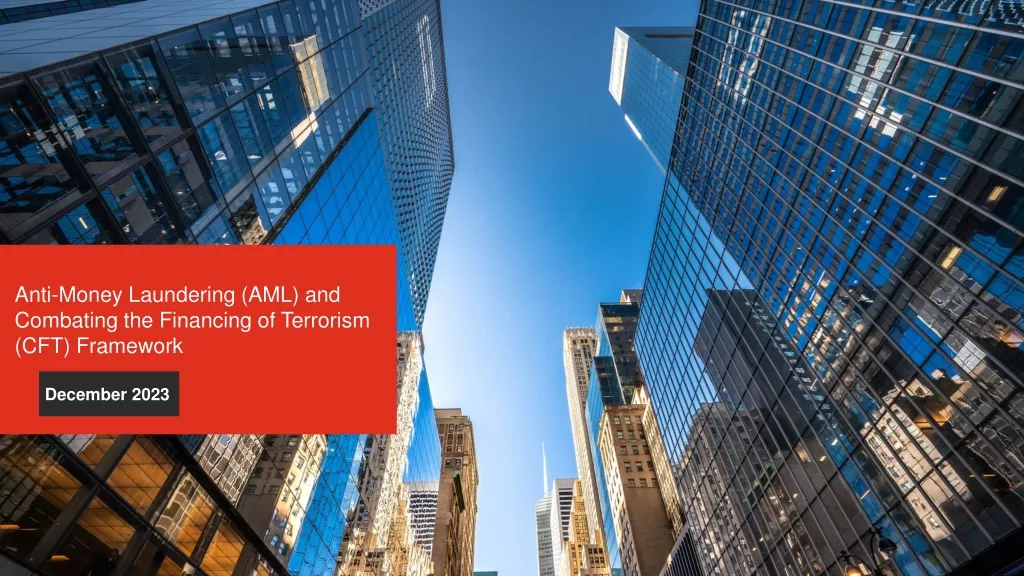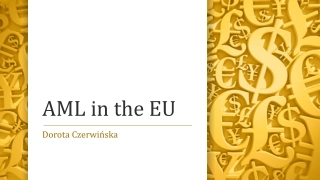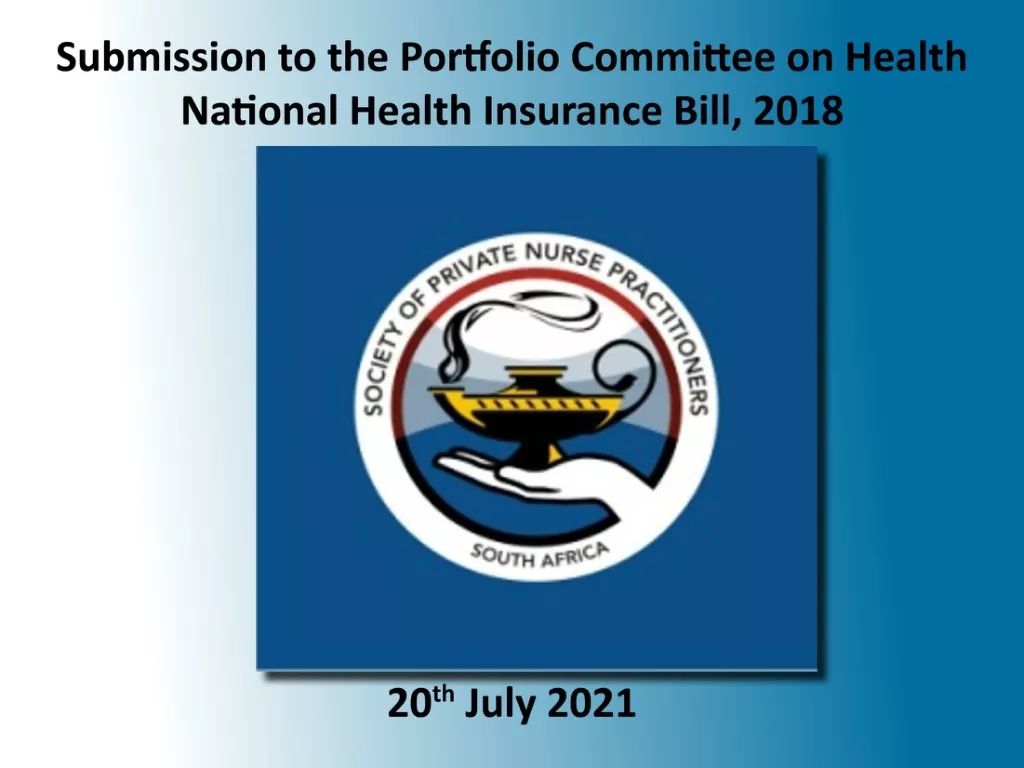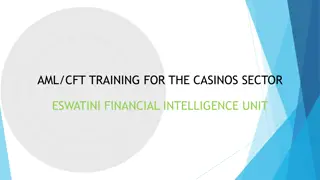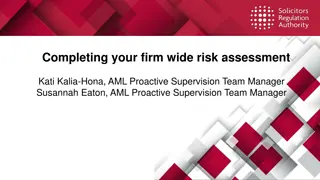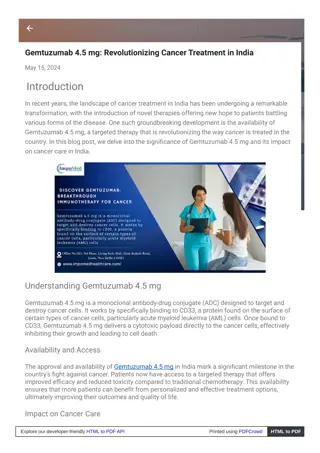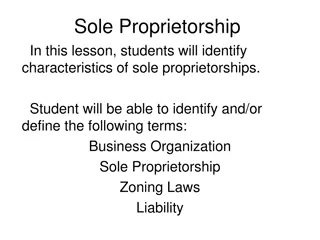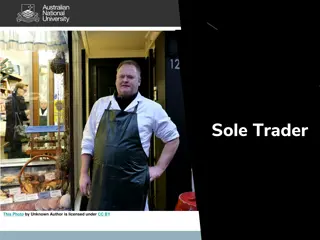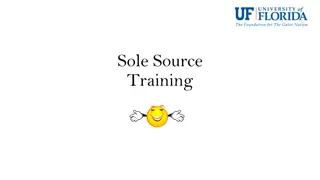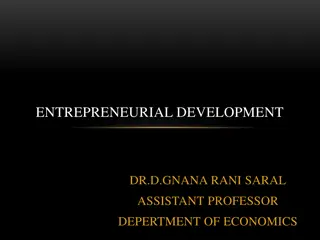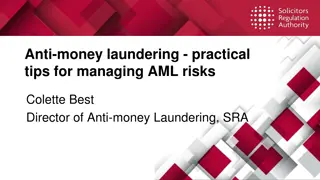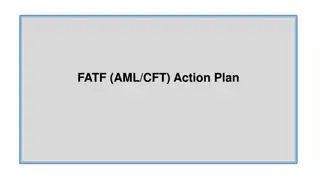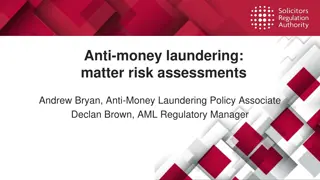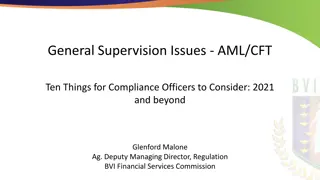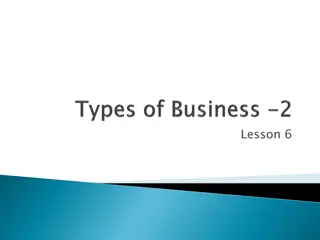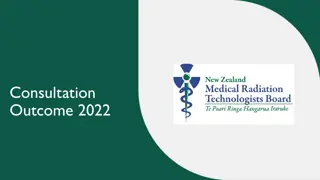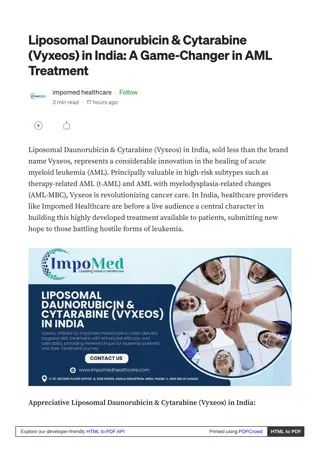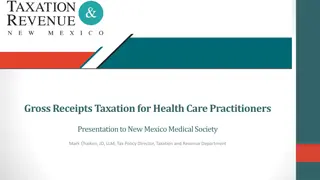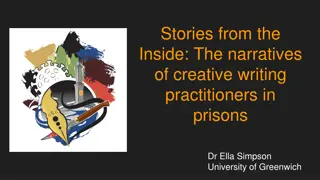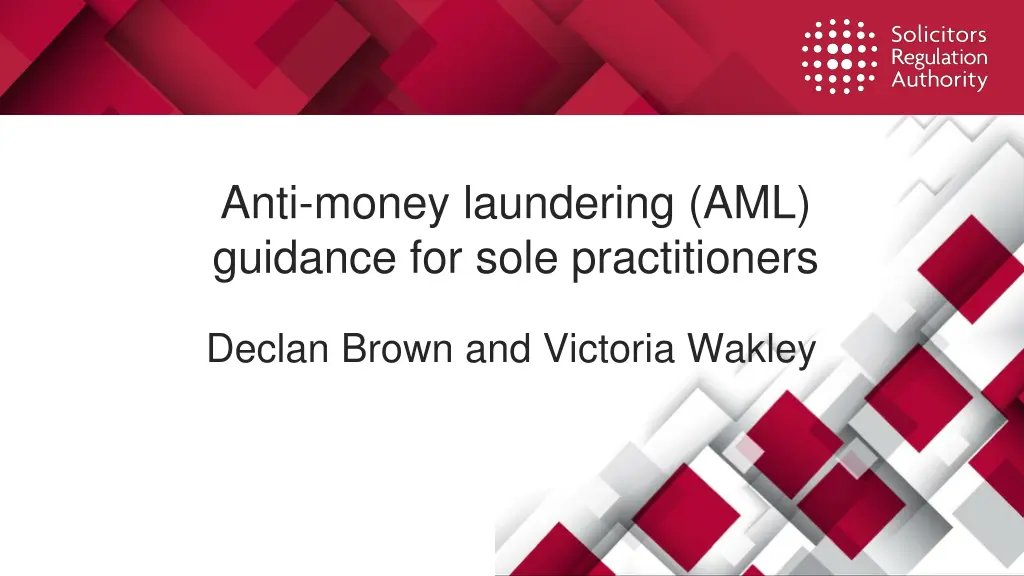
Effective AML Guidance for Sole Practitioners in Financial Compliance
Discover essential anti-money laundering (AML) guidance tailored for sole practitioners, including debunking common myths, highlighting regulatory obligations, and best practices to ensure compliance. Stay informed to mitigate risks and protect your practice.
Download Presentation

Please find below an Image/Link to download the presentation.
The content on the website is provided AS IS for your information and personal use only. It may not be sold, licensed, or shared on other websites without obtaining consent from the author. If you encounter any issues during the download, it is possible that the publisher has removed the file from their server.
You are allowed to download the files provided on this website for personal or commercial use, subject to the condition that they are used lawfully. All files are the property of their respective owners.
The content on the website is provided AS IS for your information and personal use only. It may not be sold, licensed, or shared on other websites without obtaining consent from the author.
E N D
Presentation Transcript
Anti-money laundering (AML) guidance for sole practitioners Declan Brown and Victoria Wakley
Who we are Money Laundering, Terrorist Financing and Transfer of Funds (Information on the Payer) Regulations 2017 ( MLR 2017 ) Supervise AML compliance for nearly 5,600 firms 20% of these are sole practitioners Office for Professional Body Anti-Money Laundering Supervision (OPBAS)
Myth 1 MLR 2017 doesn t apply to sole practitioners Myth: I'm too small to be caught by MLR 2017. Reality: Sole practitioners are subject to all MLR obligations if they carry out regulated activities.
Myth 2 'Client Due Diligence (CDD) isn't needed for existing clients' Myth: Personal knowledge replaces formal checks. Reality: CDD must be completed on all clients, regardless of familiarity.
Myth 3 I wouldn t take on a risky client, I don t need to bother with client and matter risk assessments my firm wide risk assessment covers that Myth: Client and matter risk assessments are only for big firms or unusual clients. Reality: All firms must have: A written firm wide risk assessment (FWRA) Client and matter risk assessments (CMRA)
Myth 4 'Supervision is light touch for sole practitioners' Myth: Regulator focus is only on big firms. Reality: Supervisors assess compliance risk, not size.
What we have seen Tailored policies, controls and procedures. Detailed source of funds checks. Making a note of training. Making use of resources available.
Poor practice Acting or advising beyond your expertise Handling occasional work in unfamiliar areas (e.g. conveyancing, tax advice) without expertise. Increases the risk of missing red flags or applying incorrect controls. We expect you to decline work outside your competence (SRA Code of Conduct).
Poor practice No written Policies, Controls, and Procedures (PCPs) Working from memory. No PCPs tailored to firm size, services, or risk profile. Outdated references (e.g. SOCA, MLR 2007).
Poor practice Failure to recognise or report suspicious activity Overlooking red flags to keep the client happy. Failing to file a SAR when thresholds are met. No internal log or decision notes.
Poor practice Neglecting sanctions compliance No sanctions screening or misunderstanding scope. Assuming UK clients are low risk. No checks on beneficial owners, trustees, or company links.
Common mistakes More than just ID and address verification! Customer Due Diligence vs Enhanced Due Diligence. In scope vs Out of scope.
Practical tools and tips Use free and low-cost resources A web search (cross-reference names, companies, addresses). Companies House (verify directorships, ownership, financials). Sanctions Lists (OFSI, UK Sanctions List, OFAC, EU Lists). Charity Commission (for clients claiming to be charities). Open-Source News (reputation, political exposure).
Practical tools and tips How these free tools support enhanced due diligence Identify high-risk individuals or entities early. Evidence risk assessment decisions. Spot inconsistencies in client information. Support Source of Funds and Source of Wealth enquiries. Create a clear audit trail for regulators.
Practical tools and tips Document everything Document what you checked where, when, what outcome. Keep screenshots of searches (date-stamped). File notes: why you took a particular action (or decided not to). Record internal discussions if unsure about next steps.
Key takeaways MLR 2017 applies to all firms, regardless of size. Proportionality matters, but compliance is non-negotiable. Documentation and records are a must. Review and update regularly. Enforcement action applies to those carrying out regulated work.

